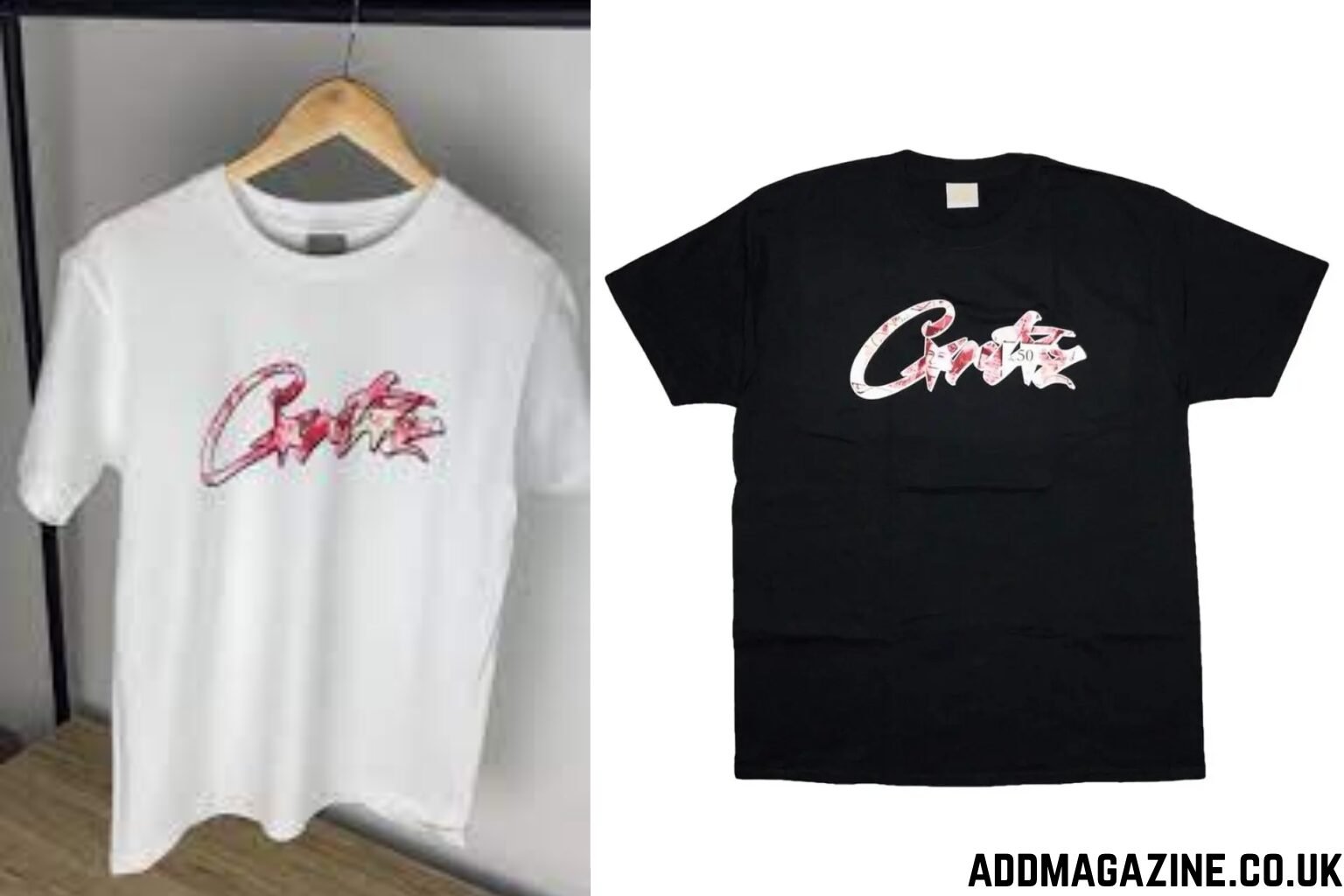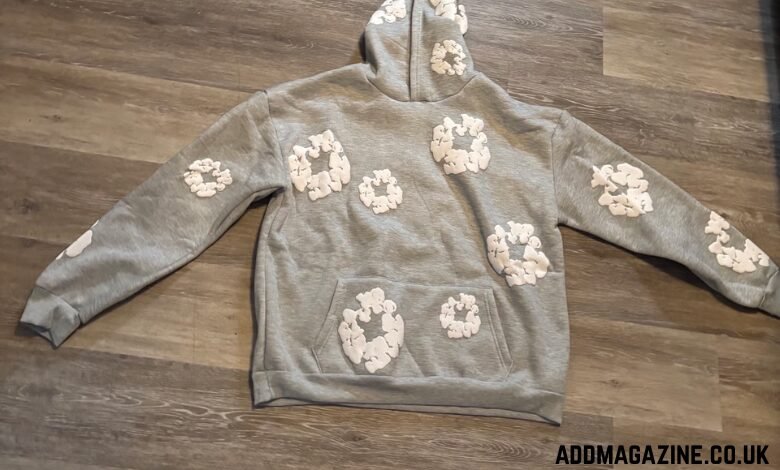Denim Tears emerged from the creative mind of Tremaine Emory, blending fashion with powerful cultural storytelling. Launched in 2019, the brand serves as more than a clothing line—it’s a visual narrative of Black history and identity. Emory uses Denim Tears as a medium to communicate resilience, pain, and pride, transforming everyday garments into symbols of collective memory. His designs often feature motifs that reference African-American experiences, slavery, and freedom. Through Denim Tears, Emory bridges art and activism, ensuring that every piece becomes a statement, allowing the fabric itself to speak truths that history books often silence.
The Power of Symbolism in Denim
Denim Tears is built on symbolism, where each design element holds deep meaning. The use of cotton wreaths, for instance, reflects the painful legacy of slavery while reclaiming it as a badge of endurance. Denim, a material historically associated with labor, becomes a tool of empowerment and storytelling. Every thread woven into a pair of jeans or a jacket carries echoes of past generations. By embedding cultural references into streetwear, Emory transforms fashion into a historical dialogue, allowing wearers to carry a message of pride and awareness wherever they go.
Fashion as a Form of Protest
Tremaine Emory’s vision for Denim Tears extends beyond aesthetics—it is rooted in resistance. His garments confront historical injustices while celebrating the strength of Black communities. The brand operates as a visual protest, merging streetwear culture with activism. Rather than using slogans or speeches, Emory lets the clothing communicate defiance and unity. Each collection challenges systems of oppression by reclaiming imagery once used to demean. Through Denim Tears, Emory redefines protest, showing that fashion can be as powerful as any march, anthem, or artwork in sparking dialogue and inspiring social change.
Honoring Black History Through Design
Denim Tears serves as a walking archive of Black history, encapsulating centuries of struggle and triumph within its collections. Emory’s work frequently references African diasporic art, music, and cultural icons. The garments honor those who paved the way for equality, from civil rights leaders to everyday workers. By stitching their stories into denim, Emory ensures their legacies remain alive and visible. His work doesn’t just commemorate history—it brings it into the present, prompting wearers to reflect on how the past continues to shape modern identity and fashion narratives today.
The Artistic Language of Fabric
Every Denim Tears piece is an artwork in motion, where texture, color, and pattern speak louder than words. Emory approaches fabric as a painter does a canvas, layering meanings within his designs. The deliberate use of cotton, denim, and vintage materials ties his collections to African-American heritage. His attention to detail transforms the garments into cultural texts, inviting interpretation. Through this artistic lens, Denim Tears transcends clothing—it becomes communication. Each piece tells a layered story about beauty, struggle, and identity, revealing how art and fashion can merge to express the human experience.
Collaboration and Cultural Dialogue
Denim Tears thrives on collaboration, using partnerships to extend its message across creative industries. Emory has worked with major brands like Levi’s, Converse, and Dior, embedding his social vision into mainstream fashion. These collaborations serve as cultural exchanges, blending luxury with authenticity. They amplify his message to global audiences while maintaining the brand’s integrity and historical consciousness. Through collaboration, Emory fosters dialogue between different creative communities, proving that meaningful storytelling can coexist with commercial success. Denim Tears thus becomes a bridge—linking art, fashion, and activism through shared cultural purpose.
Reclaiming the Narrative of Cotton
Cotton has long symbolized pain and exploitation in Black history, but Emory reclaims it as a representation of endurance. The cotton wreath—a recurring motif in Denim Tears—is a bold act of reclamation, transforming what once symbolized suffering into a mark of pride. Emory’s reinterpretation of cotton challenges the historical associations with slavery, replacing them with strength and remembrance. By centering cotton in his designs, he confronts America’s economic dependence on Black labor, forcing viewers to reckon with the material’s history. Through this reclamation, Denim Tears redefines heritage as both resistance and resilience.
The Emotional Resonance of Storytelling
Denim Tears connects emotionally with its audience by turning fashion into a deeply personal experience. Each collection tells stories that evoke empathy and reflection, allowing wearers to feel part of a broader narrative. Emory’s storytelling taps into shared cultural emotions—loss, survival, and pride—creating garments that carry both personal and collective meaning. This emotional depth distinguishes Denim Tears from typical streetwear brands. It’s not just about style but about substance and soul. The resonance of these stories ensures that Denim Tears continues to move hearts while inspiring awareness through artful expression.
Global Influence and Cultural Recognition
Though rooted in African-American experience, Denim Tears has achieved global recognition for its universal message of justice and identity. The brand resonates with audiences worldwide who see fashion as a tool for storytelling and activism. Its collaborations and exhibitions have placed Emory among the most influential voices in contemporary fashion. Yet, despite its international acclaim, Denim Tears remains grounded in its mission—to honor Black history and uplift marginalized voices. This balance of authenticity and influence cements its role as a cultural movement that transcends borders and generations alike.
The Legacy of Denim Tears
Denim Tears stands as more than a brand—it is a living legacy of art, activism, and identity. Through his visionary approach, Denim Tears Jacket Tremaine Emory transformed fashion into a medium of truth-telling and empowerment. The brand’s impact extends far beyond the runway, influencing culture, conversation, and consciousness. Denim Tears reminds us that fabric can hold stories, that clothing can carry memory, and that fashion can inspire change. Its message continues to echo through every stitch, proving that the voices in fabric are powerful, enduring, and impossible to silence.




